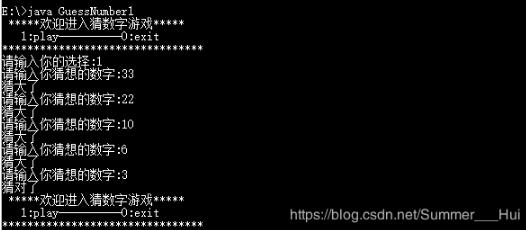vue 數(shù)據(jù)雙向綁定的實(shí)現(xiàn)方法
本文適合于學(xué)習(xí)Vue源碼的初級(jí)學(xué)者,閱讀后,你將對(duì)Vue的數(shù)據(jù)雙向綁定原理有一個(gè)大致的了解,認(rèn)識(shí)Observer、Compile、Wathcer三大角色(如下圖所示)以及它們所發(fā)揮的功能。
本文將一步步帶你實(shí)現(xiàn)簡(jiǎn)易版的數(shù)據(jù)雙向綁定,每一步都會(huì)詳細(xì)分析這一步要解決的問(wèn)題以及代碼為何如此寫,因此,在閱讀完本文后,希望你能自己動(dòng)手實(shí)現(xiàn)一個(gè)簡(jiǎn)易版數(shù)據(jù)雙向綁定。

本文要實(shí)現(xiàn)的效果如下圖所示:

本文用到的HTML和JS主體代碼如下:
<div id='app'> <h1 v-text='msg'></h1> <input type='text' v-model='msg'> <div> <h1 v-text='msg2'></h1> <input type='text' v-model='msg2'> </div></div>
let vm = new Vue({ el: '#app', data: { msg: 'hello world', msg2: 'hello xiaofei' } })
我們將按照下面三個(gè)步驟來(lái)實(shí)現(xiàn):
第一步:將data中的數(shù)據(jù)同步到頁(yè)面上,實(shí)現(xiàn) M ==> V 的初始化; 第二步:當(dāng)input框中輸入值時(shí),將新值同步到data中,實(shí)現(xiàn) V ==> M 的綁定; 第三步:當(dāng)data數(shù)據(jù)發(fā)生更新的時(shí)候,觸發(fā)頁(yè)面發(fā)生變化,實(shí)現(xiàn) M ==> V 的綁定。 2.2 實(shí)現(xiàn)過(guò)程2.2.1 入口代碼首先,我們要?jiǎng)?chuàng)造一個(gè)Vue類,這個(gè)類接收一個(gè) options 對(duì)象,同時(shí),我們要對(duì) options 對(duì)象中的有效信息進(jìn)行保存;
然后,我們有三個(gè)主要模塊:Observer、Compile、Wathcer,其中,Observer用來(lái)數(shù)據(jù)劫持的,Compile用來(lái)解析元素,Wathcer是觀察者。可以寫出如下代碼:(Observer、Compile、Wathcer這三個(gè)概念,不用細(xì)究,后面會(huì)詳解講解)。
class Vue { // 接收傳進(jìn)來(lái)的對(duì)象 constructor(options) { // 保存有效信息 this.$el = document.querySelector(options.el); this.$data = options.data; // 容器: {屬性1: [wathcer1, wathcer2...], 屬性2: [...]},用來(lái)存放每個(gè)屬性觀察者 this.$watcher = {}; // 解析元素: 實(shí)現(xiàn)Compile this.compile(this.$el); // 要解析元素, 就得把元素傳進(jìn)去 // 劫持?jǐn)?shù)據(jù): 實(shí)現(xiàn) Observer this.observe(this.$data); // 要劫持?jǐn)?shù)據(jù), 就得把數(shù)據(jù)傳入 } compile() {} observe() {} }2.2.2 頁(yè)面初始化
在這一步,我們要實(shí)現(xiàn)頁(yè)面的初始化,即解析出v-text和v-model指令,并將data中的數(shù)據(jù)渲染到頁(yè)面中。
這一步的關(guān)鍵在于實(shí)現(xiàn)compile方法,那么該如何解析el元素呢?思路如下:
首先要獲取到el下面的所有子節(jié)點(diǎn),然后遍歷這些子節(jié)點(diǎn),如果子節(jié)點(diǎn)還有子節(jié)點(diǎn),那我們就需要用到遞歸的思想; 遍歷子節(jié)點(diǎn)找到所有有指令的元素,并將對(duì)應(yīng)的數(shù)據(jù)渲染到頁(yè)面中。代碼如下:(主要看compile那部分)
class Vue { // 接收傳進(jìn)來(lái)的對(duì)象 constructor(options) { // 獲取有用信息 this.$el = document.querySelector(options.el); this.$data = options.data; // 容器: {屬性1: [wathcer1, wathcer2...], 屬性2: [...]} this.$watcher = {}; // 2. 解析元素: 實(shí)現(xiàn)Compile this.compile(this.$el); // 要解析元素, 就得把元素傳進(jìn)去 // 3. 劫持?jǐn)?shù)據(jù): 實(shí)現(xiàn) Observer this.observe(this.$data); // 要劫持?jǐn)?shù)據(jù), 就得把數(shù)據(jù)傳入 } compile(el) { // 解析元素下的每一個(gè)子節(jié)點(diǎn), 所以要獲取el.children // 備注: children 返回元素集合, childNodes返回節(jié)點(diǎn)集合 let nodes = el.children; // 解析每個(gè)子節(jié)點(diǎn)的指令 for (var i = 0, length = nodes.length; i < length; i++) {let node = nodes[i];// 如果當(dāng)前節(jié)點(diǎn)還有子元素, 遞歸解析該節(jié)點(diǎn)if(node.children){ this.compile(node);}// 解析帶有v-text指令的元素if (node.hasAttribute('v-text')) { let attrVal = node.getAttribute('v-text'); node.textContent = this.$data[attrVal]; // 渲染頁(yè)面}// 解析帶有v-model指令的元素if (node.hasAttribute('v-model')) { let attrVal = node.getAttribute('v-model'); node.value = this.$data[attrVal];} } } observe(data) {} }
這樣,我們就實(shí)現(xiàn)頁(yè)面的初始化了。

因?yàn)閕nput帶有v-model指令,因此我們要實(shí)現(xiàn)這樣一個(gè)功能:在input框中輸入字符,data中綁定的數(shù)據(jù)發(fā)生相應(yīng)的改變。
我們可以在input這個(gè)元素上綁定一個(gè)input事件,事件的效果就是:將data中的相應(yīng)數(shù)據(jù)修改為input中的值。
這一部分的實(shí)現(xiàn)代碼比較簡(jiǎn)單,只要看標(biāo)注那個(gè)地方就明白了,代碼如下:
class Vue { constructor(options) { this.$el = document.querySelector(options.el); this.$data = options.data; this.$watcher = {};this.compile(this.$el); this.observe(this.$data); } compile(el) { let nodes = el.children; for (var i = 0, length = nodes.length; i < length; i++) {let node = nodes[i];if(node.children){ this.compile(node);}if (node.hasAttribute('v-text')) { let attrVal = node.getAttribute('v-text'); node.textContent = this.$data[attrVal];}if (node.hasAttribute('v-model')) { let attrVal = node.getAttribute('v-model'); node.value = this.$data[attrVal]; // 看這里!!只多了三行代碼!! node.addEventListener('input', (ev)=>{ this.$data[attrVal] = ev.target.value; // 可以試著在這里執(zhí)行:console.log(this.$data), // 就可以看到每次在輸入框輸入文字的時(shí)候,data中的msg值也發(fā)生了變化 })} } } observe(data) {} }2.2.4 數(shù)據(jù)影響視圖
至此,我們已經(jīng)實(shí)現(xiàn)了:當(dāng)我們?cè)趇nput框中輸入字符的時(shí)候,data中的數(shù)據(jù)會(huì)自動(dòng)發(fā)生更新;
本小節(jié)的主要任務(wù)是:當(dāng)data中的數(shù)據(jù)發(fā)生更新的時(shí)候,綁定了該數(shù)據(jù)的元素會(huì)在頁(yè)面上自動(dòng)更新視圖。具體思路如下:
1) 我們將要實(shí)現(xiàn)一個(gè) Wathcer 類,它有一個(gè)update方法,用來(lái)更新頁(yè)面。觀察者的代碼如下:
class Watcher{ constructor(node, updatedAttr, vm, expression){ // 將傳進(jìn)來(lái)的值保存起來(lái),這些數(shù)據(jù)都是渲染頁(yè)面時(shí)要用到的數(shù)據(jù) this.node = node; this.updatedAttr = updatedAttr; this.vm = vm; this.expression = expression; this.update(); } update(){ this.node[this.updatedAttr] = this.vm.$data[this.expression]; } }
2) 試想,我們?cè)摻o哪些數(shù)據(jù)添加觀察者?何時(shí)給數(shù)據(jù)添加觀察者?
在解析元素的時(shí)候,當(dāng)解析到v-text和v-model指令的時(shí)候,說(shuō)明這個(gè)元素是需要和數(shù)據(jù)雙向綁定的,因此我們?cè)谶@時(shí)往容器中添加觀察者。我們需用到這樣一個(gè)數(shù)據(jù)結(jié)構(gòu):{屬性1: [wathcer1, wathcer2...], 屬性2: [...]},如果不是很清晰,可以看下圖:

可以看到:vue實(shí)例中有一個(gè)$wathcer對(duì)象,$wathcer的每個(gè)屬性對(duì)應(yīng)每個(gè)需要綁定的數(shù)據(jù),值是一個(gè)數(shù)組,用來(lái)存放觀察了該數(shù)據(jù)的觀察者。(備注:Vue源碼中專門創(chuàng)造了Dep這么一個(gè)類,對(duì)應(yīng)這里所說(shuō)的數(shù)組,本文屬于簡(jiǎn)易版本,就不過(guò)多介紹了)
3) 劫持?jǐn)?shù)據(jù):利用對(duì)象的訪問(wèn)器屬性getter和setter做到當(dāng)數(shù)據(jù)更新的時(shí)候,觸發(fā)一個(gè)動(dòng)作,這個(gè)動(dòng)作的主要目的就是讓所有觀察了該數(shù)據(jù)的觀察者執(zhí)行update方法。
總結(jié)一下,在本小節(jié)我們需要做的工作:
實(shí)現(xiàn)一個(gè)Wathcer類; 在解析指令的時(shí)候(即在compile方法中)添加觀察者; 實(shí)現(xiàn)數(shù)據(jù)劫持(實(shí)現(xiàn)observe方法)。完整代碼如下:
class Vue { // 接收傳進(jìn)來(lái)的對(duì)象 constructor(options) { // 獲取有用信息 this.$el = document.querySelector(options.el); this.$data = options.data; // 容器: {屬性1: [wathcer1, wathcer2...], 屬性2: [...]} this.$watcher = {}; // 解析元素: 實(shí)現(xiàn)Compile this.compile(this.$el); // 要解析元素, 就得把元素傳進(jìn)去 // 劫持?jǐn)?shù)據(jù): 實(shí)現(xiàn) Observer this.observe(this.$data); // 要劫持?jǐn)?shù)據(jù), 就得把數(shù)據(jù)傳入 } compile(el) { // 解析元素下的每一個(gè)子節(jié)點(diǎn), 所以要獲取el.children // 拓展: children 返回元素集合, childNodes返回節(jié)點(diǎn)集合 let nodes = el.children; // 解析每個(gè)子節(jié)點(diǎn)的指令 for (var i = 0, length = nodes.length; i < length; i++) {let node = nodes[i];// 如果當(dāng)前節(jié)點(diǎn)還有子元素, 遞歸解析該節(jié)點(diǎn)if (node.children) { this.compile(node);}if (node.hasAttribute('v-text')) { let attrVal = node.getAttribute('v-text'); // node.textContent = this.$data[attrVal]; // Watcher在實(shí)例化時(shí)調(diào)用update, 替代了這行代碼 /** * 試想Wathcer要更新節(jié)點(diǎn)數(shù)據(jù)的時(shí)候要用到哪些數(shù)據(jù)? * e.g. p.innerHTML = vm.$data[msg] * 所以要傳入的參數(shù)依次是: 當(dāng)前節(jié)點(diǎn)node, 需要更新的節(jié)點(diǎn)屬性, vue實(shí)例, 綁定的數(shù)據(jù)屬性 */ // 往容器中添加觀察者: {msg1: [Watcher, Watcher...], msg2: [...]} if (!this.$watcher[attrVal]) { this.$watcher[attrVal] = []; } this.$watcher[attrVal].push(new Watcher(node, 'innerHTML', this, attrVal))}if (node.hasAttribute('v-model')) { let attrVal = node.getAttribute('v-model'); node.value = this.$data[attrVal]; node.addEventListener('input', (ev) => { this.$data[attrVal] = ev.target.value; }) if (!this.$watcher[attrVal]) { this.$watcher[attrVal] = []; } // 不同于上處用的innerHTML, 這里input用的是vaule屬性 this.$watcher[attrVal].push(new Watcher(node, 'value', this, attrVal))} } } observe(data) { Object.keys(data).forEach((key) => {let val = data[key]; // 這個(gè)val將一直保存在內(nèi)存中,每次訪問(wèn)data[key],都是在訪問(wèn)這個(gè)valObject.defineProperty(data, key, { get() { return val; // 這里不能直接返回data[key],不然會(huì)陷入無(wú)限死循環(huán) }, set(newVal) { if (val !== newVal) { val = newVal;// 同理,這里不能直接對(duì)data[key]進(jìn)行設(shè)置,會(huì)陷入死循環(huán) this.$watcher[key].forEach((w) => {w.update(); }) } }}) }) } } class Watcher { constructor(node, updatedAttr, vm, expression) { // 將傳進(jìn)來(lái)的值保存起來(lái) this.node = node; this.updatedAttr = updatedAttr; this.vm = vm; this.expression = expression; this.update(); } update() { this.node[this.updatedAttr] = this.vm.$data[this.expression]; } } let vm = new Vue({ el: '#app', data: { msg: 'hello world', msg2: 'hello xiaofei' } })
至此,代碼就完成了。
3. 未來(lái)的計(jì)劃用設(shè)計(jì)模式的知識(shí),分析上面這份源碼存在的問(wèn)題,并和Vue源碼進(jìn)行比對(duì),算是對(duì)Vue源碼的解析
以上就是vue 數(shù)據(jù)雙向綁定的實(shí)現(xiàn)方法的詳細(xì)內(nèi)容,更多關(guān)于vue 數(shù)據(jù)雙向綁定的資料請(qǐng)關(guān)注好吧啦網(wǎng)其它相關(guān)文章!
相關(guān)文章:
1. el-input無(wú)法輸入的問(wèn)題和表單驗(yàn)證失敗問(wèn)題解決2. 父div高度不能自適應(yīng)子div高度的解決方案3. ASP動(dòng)態(tài)include文件4. 不要在HTML中濫用div5. Vue中原生template標(biāo)簽失效如何解決6. XML入門的常見(jiàn)問(wèn)題(三)7. XML 非法字符(轉(zhuǎn)義字符)8. vue跳轉(zhuǎn)頁(yè)面常用的幾種方法匯總9. CSS3實(shí)例分享之多重背景的實(shí)現(xiàn)(Multiple backgrounds)10. js開(kāi)發(fā)中的頁(yè)面、屏幕、瀏覽器的位置原理(高度寬度)說(shuō)明講解(附圖)

 網(wǎng)公網(wǎng)安備
網(wǎng)公網(wǎng)安備